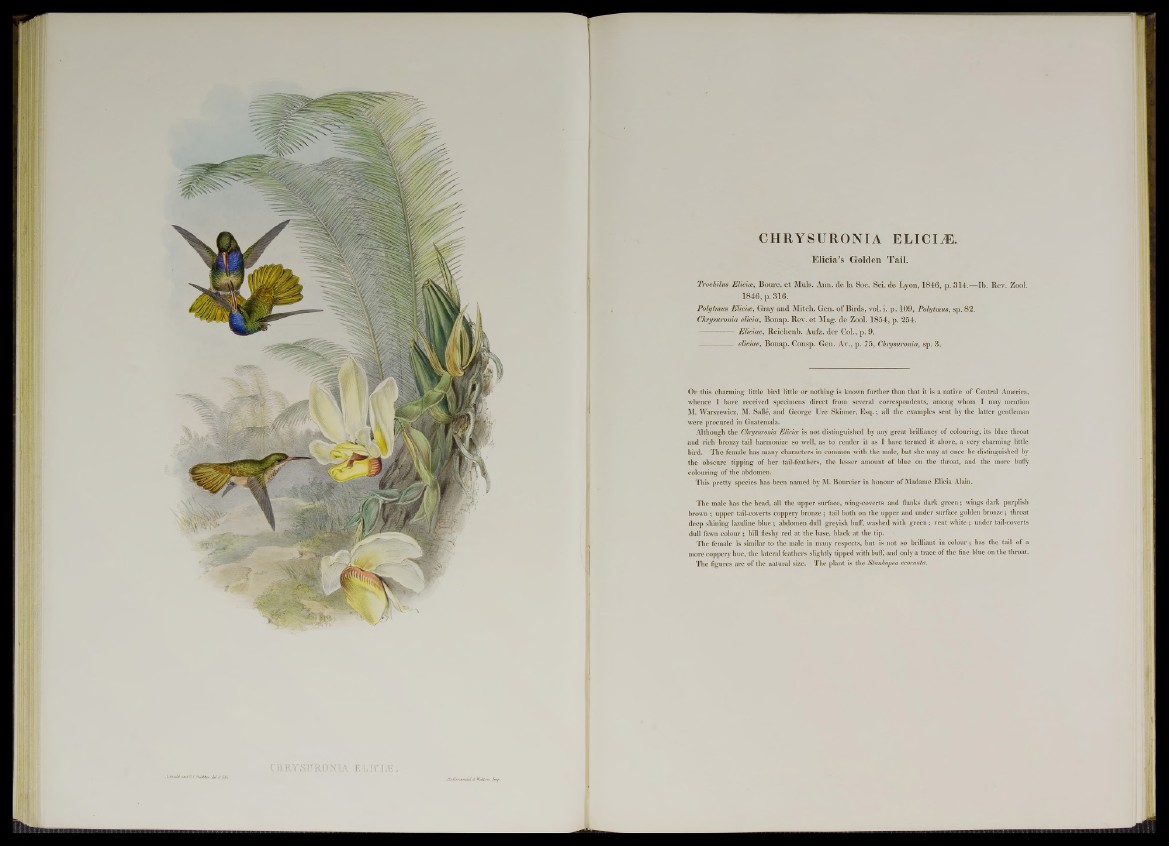
CHRYSURONIA ELICIT.
Elicia’s Golden Tail.
Trochilus Elicia , Bourc. e t Muls. Ann. de la Soc. Sci. de Lyon, 1846, p. 314.— lb . Rev. Zool.
1846, p. 316.
Polytmw Elicia , Gray and Mitch. Gen. o f Birds, vol. i. p . 109, Polytmus, sp. 82.
Chrymronia elicia, Bonap. Rev. e t Mag. de Zool. 1854, p. 254.
---------------jEliciae, Reichenb. Aufz. der Col., p. 9.
--------------- eliciae, Bonap. Consp. Gen. Av., p. 75, Chrymronia, sp. 3.
O f this charming little bird little or nothing is known further than that it is a native o f Central America,
whence I have received specimens direct from several correspondents, among whom I may mention
M. Warszewicz, M. Sallé, and George Ure Skinner, Esq.; all the examples sent by the latter gentleman
were procured in Guatemala.
Although the Chrysuronia Elicia is not distinguished by any great brilliancy of colouring, its blue throat
and rich bronzy tail harmonize so well, as to render it as I have termed it above, a very charming little
bird. The female has many characters in common with the male, but she may at once be distinguished by
the obscure tipping of her tail-feathers, the lesser amount of blue on the throat, and the more buffy
colouring of the abdomen.
This pretty species has been named by M. Bourcier in honour of Madame Elicia Alain.
The male has the head, all the upper surface, wing-coverts and flanks dark green; wings dark purplish
brown ; upper tail-coverts coppery bronze ; tail both on the upper and under surface golden bronze; throat
deep shining lazuline blue ; abdomen dull greyish buff, washed with green ; vent white ; under tail-coverts
dull fawn colour; bill fleshy red at the base, black at the tip.
The female is similar to the male in many respects, but is not so brilliant in colour; has the tail of a
more coppery hue, the lateral feathers slightly tipped with buff, and only a trace of the fine blue on the throat.
The figures are of the natural size. The plant is the Stanhopea ecornuta.